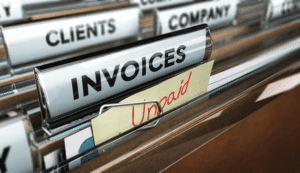Adjusting Journal Entry Definition: Purpose, Types, and Example
With cash accounting, this occurs only when money is received for goods or services. Accrual accounting instead allows for a lag between payment and product (e.g., with purchases made on credit). Fees earned from providing services and the amounts of merchandise sold. Under the accrual basis of accounting, revenues are recorded at the time of delivering the service or the merchandise, even if cash is not received at the time of delivery. As shown in the preceding list, adjusting entries are most commonly of three types. The first is the accrual entry, which is used to record a revenue or expense that has not yet been recorded through a standard accounting transaction.
Examples of Adjusting Entries
We don’t guarantee that our suggestions will work best for each individual or business, so consider your unique needs when choosing products and services. Now, when you record your payroll for Jan. 1, your Wages and Salaries expense won’t be overstated. We’re firm believers in the Golden Rule, which is why editorial opinions are ours alone and have not been previously reviewed, approved, or endorsed by included advertisers.
Composition of an Adjusting Entry
HighRadius Record to Report (R2R) solution transforms bookkeeping, bringing automation to the forefront to significantly boost efficiency and precision. From data fetching to journal entry and analysis, HighRadius empowers organizations to achieve a groundbreaking 50% reduction in manual tasks through its no-code platform, LiveCube. Seamlessly combining the familiarity of an Excel-like interface with pre-configured bi-directional data integrations, LiveCube establishes a new standard in flexibility and user-friendly automation. We now record the adjusting entries from January 31, 2019, for Printing Plus.
- The actual cash transaction would still be tracked in the statement of cash flows.
- Taking into account the estimates for non-cash items, a company can better track all of its revenues and expenses, and the financial statements reflect a more accurate financial picture of the company.
- Adjusting entries include accruals for revenue and expenses, deferrals for prepayments, estimates for depreciation and provisions for doubtful accounts.
- Assume that as of January 31 some of the printing services have been provided.
- The company may also enter into a lease agreement that requires several months, or years, of rent in advance.
Ask Any Financial Question
This is posted to the Depreciation Expense–Equipment T-account on the debit side (left side). This is posted to the Accumulated Depreciation–Equipment T-account on the credit side (right side). Once you have journalized all of your adjusting entries, the next step is posting the entries to your ledger. Posting adjusting entries is no different than posting the regular daily journal entries. T-accounts will be the visual representation for the Printing Plus general ledger.
Adjusting Entry for Accrued Expense
The same is true about just about any asset you can name, except, perhaps, cash itself. For information pertaining to the registration status of 11 Financial, please contact the state securities regulators for those states in which 11 Financial maintains a registration filing. The updating/correcting process is performed through journal entries that are made at the end of an accounting year. However, there is a need to formulate accounting transactions based on the accrual accounting convention. According to the matching concept, the revenue of the current year must be matched against all the expenses of the current year that were incurred to produce the revenue.
The company recorded this as a liability because it received payment without providing the service. Assume that as of January 31 some of the printing services have been provided. Since a portion of the service was provided, a change to unearned revenue should occur. The company needs to correct this balance in the Unearned Revenue account.
One of the main financial statements (along with the balance sheet, the statement of cash flows, and the statement of stockholders’ equity). The income statement is also referred to as the profit and loss statement, P&L, statement of income, and the statement of operations. The income statement reports the revenues, gains, expenses, losses, net income and other totals for the period of time shown in the heading of the statement. If a company’s stock is publicly traded, earnings per share must appear on the face of the income statement.
In December, you record it as prepaid rent expense, debited from an expense account. Then, come January, you want to record your rent expense for the month. You’ll move January’s portion of the prepaid rent from an asset to an expense. Once you’ve wrapped your head around accrued revenue, accrued expense adjustments are fairly straightforward. They account for expenses you generated in one period, but paid for later. If you do your own bookkeeping using spreadsheets, it’s up to you to handle all the adjusting entries for your books.
Adjusting entries are accounting journal entries that convert a company’s accounting records to the accrual basis of accounting. An adjusting journal entry is typically made just prior to issuing a company’s financial statements. Deferrals are prepaid expense and revenue accounts that have delayed recognition until they have been used or earned.
Before making adjustments, it is important to understand first what adjustments are and why they are needed. Recall the transactions for Printing Plus discussed in Analyzing and Recording Transactions. Adjusting entries affect at least one nominal account and one real account.
HighRadius empowers organizations to seamlessly transition to modern accounting practices, leveraging the latest accounting technology to enhance efficiency and accuracy in financial processes. In essence, the R2R solution not only automates tasks but fundamentally reshapes how organizations approach and execute their accounting processes, driving efficiency and accuracy to new heights. For instance, if a company buys a building that’s expected to last for 10 years for $20,000, that $20,000 will be expensed throughout the entirety of the 10 years, rather than when the building is purchased. You rent a new space for your tote manufacturing business, and decide to pre-pay a year’s worth of rent in December.
Having adjusting entries doesn’t necessarily mean there is something wrong with your bookkeeping practices. Depreciation and amortization are common accounting adjustments what does organization name mean on a job application for small businesses. Using the above payroll example, let’s say as of Dec. 31 your employees had earned wages totaling $8,750 for the period from Dec. 15 through Dec. 31.
First, record the income on the books for January as deferred revenue. Then, in March, when you deliver your talk and actually earn the fee, move the money from deferred revenue to consulting revenue. Adjusting journal entries can also refer to financial reporting that corrects a mistake made previously in the accounting period. A related account is Insurance Expense, which appears on the income statement.
At the period end, the company would record the following adjusting entry. Accrued revenues are revenues earned in a period but have yet to be recorded, and no money has been collected. Some examples include interest, and services completed but a bill has yet to be sent to the customer. For example, a company pays $4,500 for an insurance policy covering six months. It is the end of the first month and the company needs to record an adjusting entry to recognize the insurance used during the month.
However, the company still needs to accrue interest expenses for the months of December, January, and February. In other words, we are dividing income and expenses into the amounts that were https://www.simple-accounting.org/ used in the current period and deferring the amounts that are going to be used in future periods. In other words, accrual-based accounting just doesn’t function without adjusting entries.
The amount in the Insurance Expense account should report the amount of insurance expense expiring during the period indicated in the heading of the income statement. This accounting entry adjusts the ledger for the accrual of expenses that have yet to be paid during the given period. Each year you will use your depreciation adjusting entries to update your balance sheet on the remaining value of the asset as well. To account for depreciation, you debit the depreciation expense and credit the accumulated depreciation.
Remember, we are making these adjustments for management purposes, not for taxes. Or perhaps a customer has made a deposit for services you have not yet rendered. Most accruals will be posted automatically in the course of your accrual basis accounting. However, there are times — like when you have made a sale but haven’t billed for it yet at the end of the accounting period — when you would need to make an accrual entry.
This is posted to the Unearned Revenue T-account on the debit side (left side). You will notice there is already a credit balance in this account from the January 9 customer payment. The $600 debit is subtracted from the $4,000 credit to get a final balance of $3,400 (credit). This is posted to the Service Revenue T-account on the credit side (right side).





 Lokacije
Lokacije Broj telefona
Broj telefona Email adresa
Email adresa